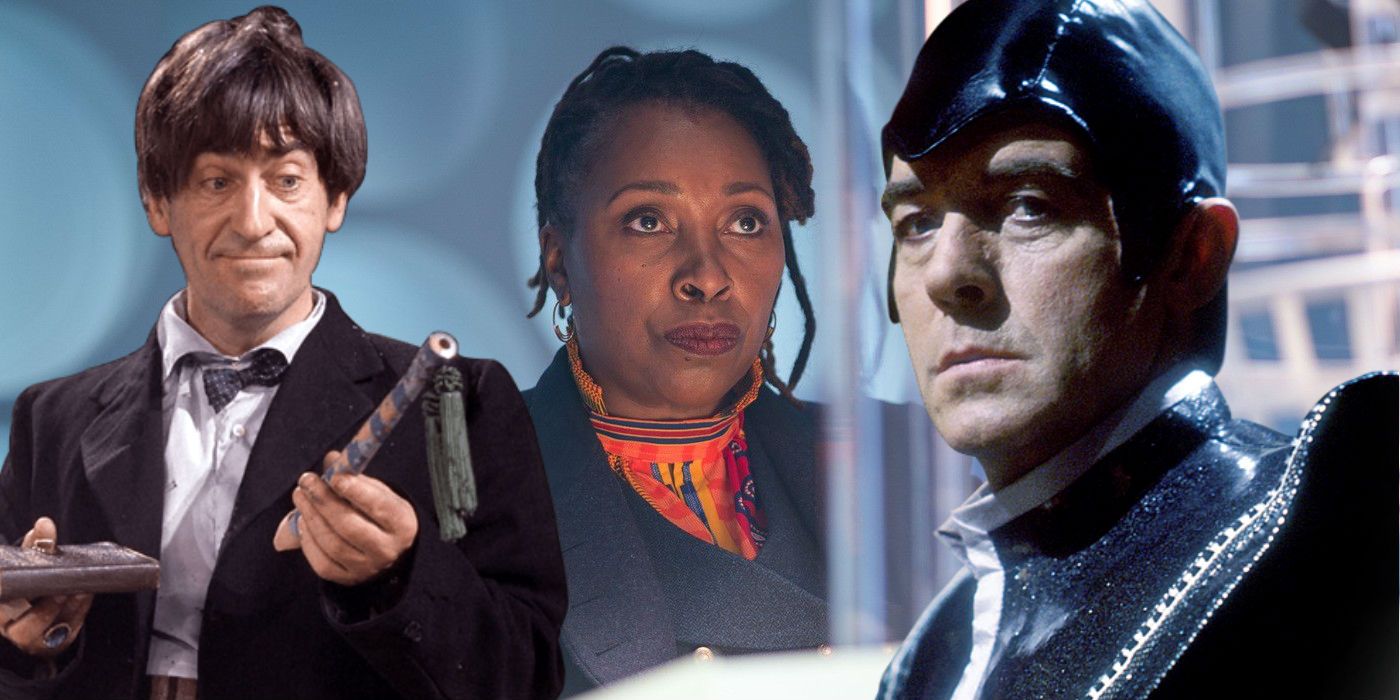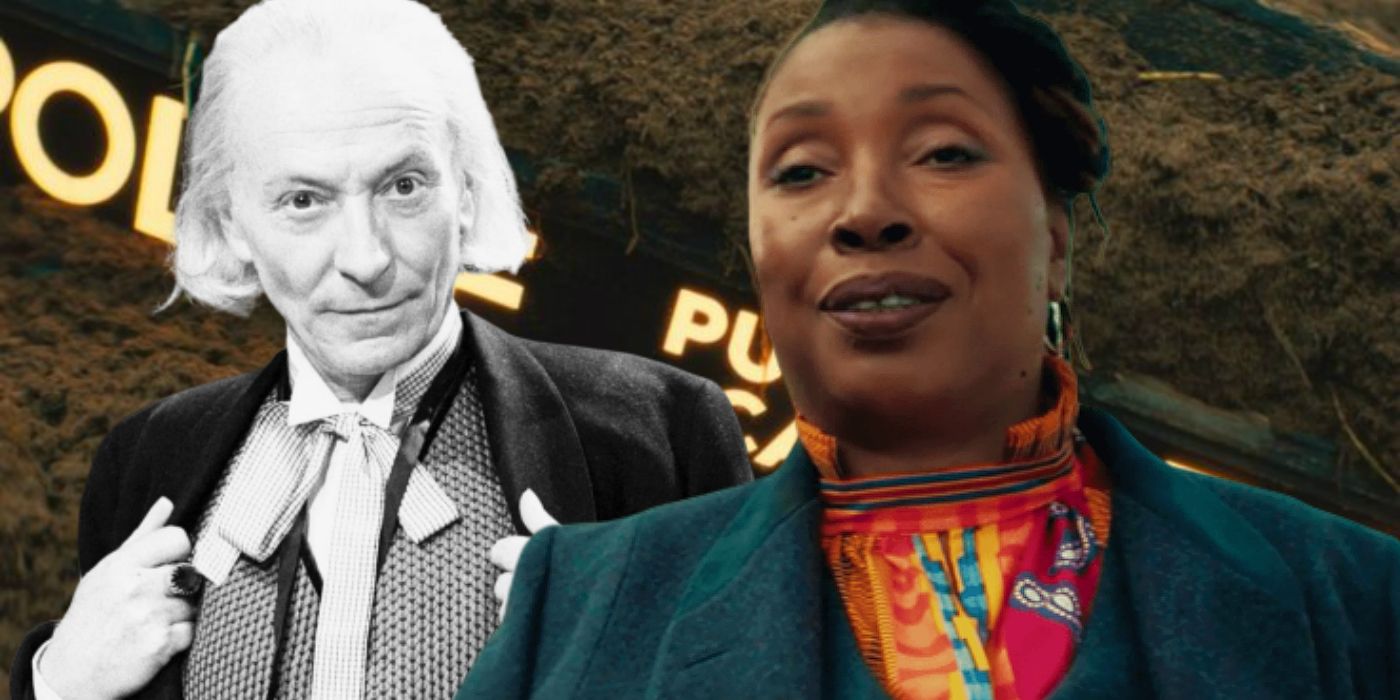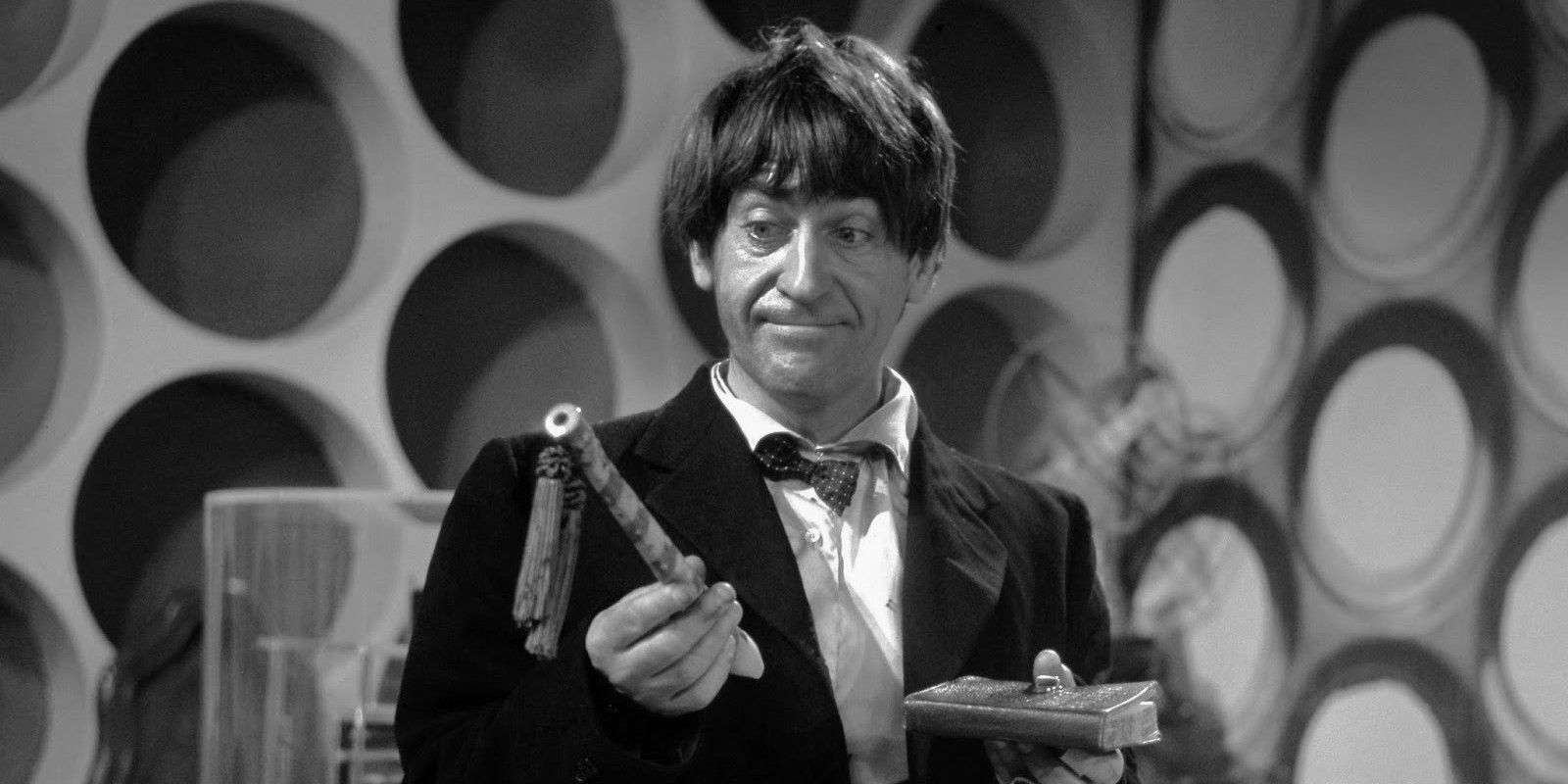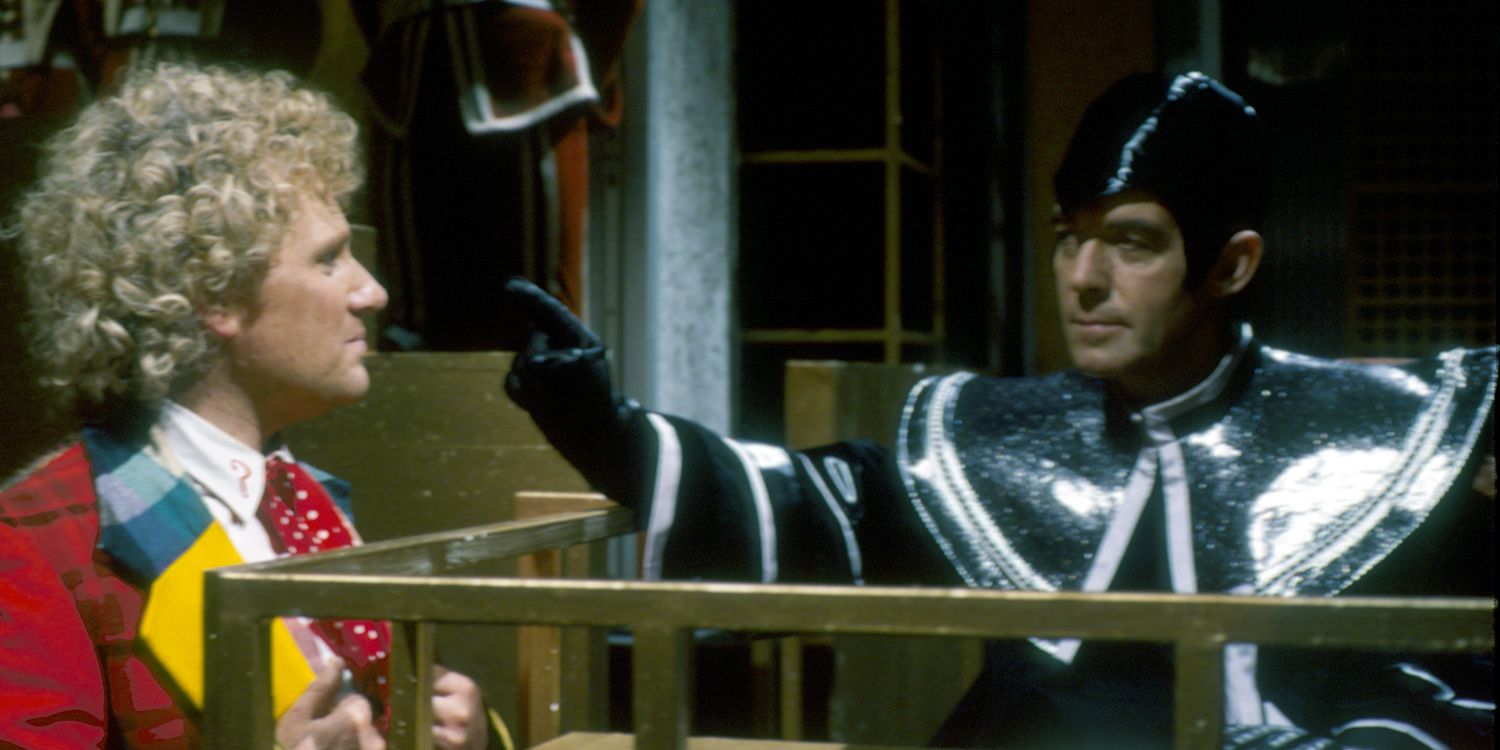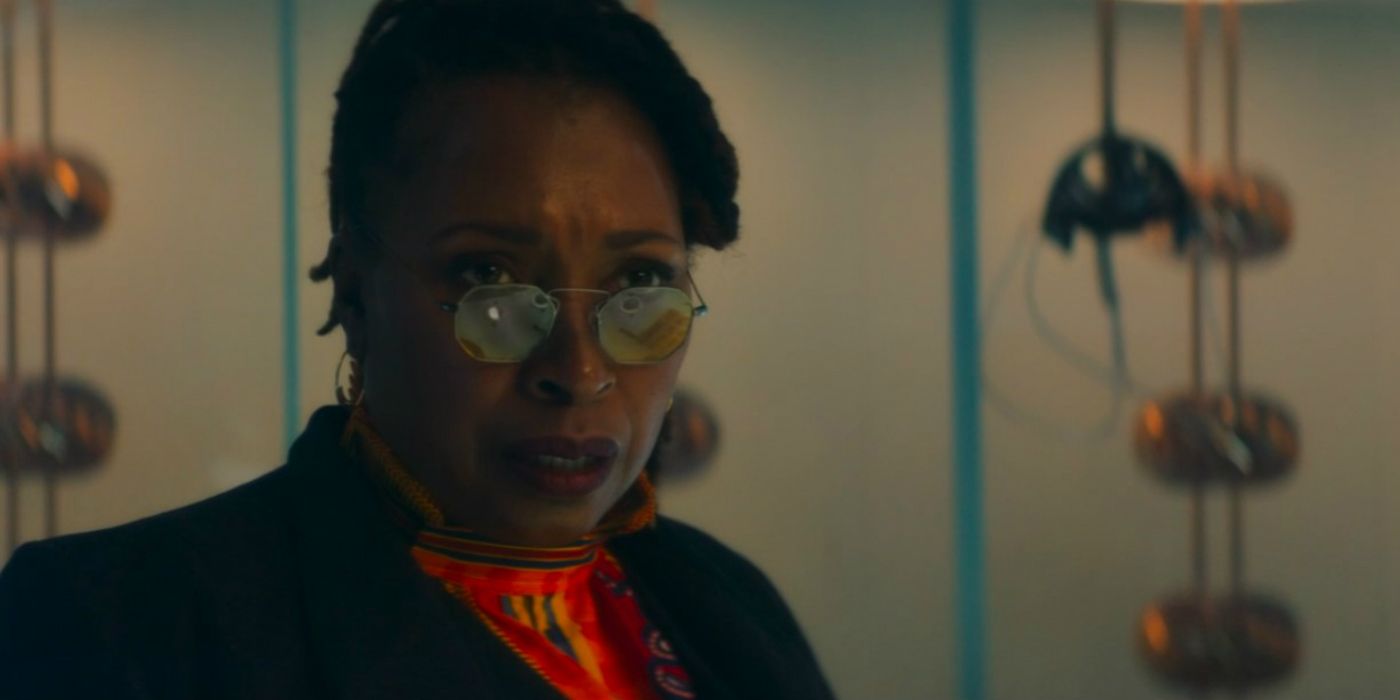Where could Doctor Who's Ruth Doctor potentially fit into the character's past line of regenerations? In season 12's "Fugitive of the Judoon," Doctor Who shocked audiences by unveiling a brand new iteration of the Doctor that had been hiding on Earth as a human tour guide. Using the chameleon arch, Jo Martin's Doctor transformed herself from renegade Time Lord to Ruth from Gloucester, expert on cathedral history. Ruth remained undercover until a mysterious pursuer hired the Judoon to track her down, ultimately forcing Ruth to restore her true Gallifreyan self.
Jodie Whittaker's Thirteenth (probably?) Doctor naturally assumes that Ruth is a future regeneration, since it's not a face she recalls from her past. However, Ruth doesn't recognize the Thirteenth Doctor either. This is highly unusual, since previous meetings between Doctors have always seen the senior version recognize his former self, but the duo depart none the wiser. The natural assumption to make is that Ruth is the Doctor from an alternate universe, with that concept introduced in the season 12 premiere via the Kasaavin, but this theory has been denied by Chris Chibnall, Doctor Who's showrunner, who insists Jo is playing the 'proper' Doctor, not a mirror version.
If the alternate Doctor theory is being taken off the table, this means Ruth has to fit into the Doctor's timeline of regenerations as it stands. Here's every possible place the new Doctor could slot into the character's history.
Ruth Is NOT The First Doctor
Many fans online have assumed Ruth must predate William Hartnell's First Doctor in order to fit into the established timeline. Her TARDIS shares a similar design, she doesn't recognize the sonic screwdriver and 1976's "The Brain of Morbius" already put forth the idea that Hartnell might have predecessors, however, this is impossible for a number of reasons. Firstly, the TARDIS doesn't attain its permanent police box form until the First Doctor leaves England and heads for the prehistoric age at the end of Doctor Who's very first episode in 1963. If Ruth really was a pre-Hartnell Doctor, her TARDIS would blend into its surroundings as it was designed to, instead of being the recognizable police box Jodie Whittaker digs up from an unmarked grave.
Secondly, the exchange between Whittaker and Martin's Doctors strongly suggests that Ruth has regenerated in the past. The new Doctor states, "so would I [remember] if I'd ever been you, which I haven't" and this line reads like someone familiar with the process of regeneration. If the Ruth Doctor was the first of her cycle, she would've said so while arguing with Whittaker, rather than just saying she doesn't remember a regeneration that wore rainbows and short trousers.
According to Time Lord physiology, the Ruth Doctor also can't belong to a previous regeneration cycle. When Matt Smith's Doctor was afforded a brand new set of lives from the hidden Time Lords in "The Name of the Doctor," he retained all of his memories, quirks and skills from the past, as did the Master when he underwent the same process. If Ruth belonged to a different set of regenerations, either in the past or future, one of the Doctors still would've remembered the other. It's also highly unlikely that Doctor Who would rewrite history to such an extent as to displace William Hartnell as the very first Doctor. Despite the implied ramifications from "The Brain of Morbius," Hartnell's position in Doctor Who lore has become sacred.
Ruth Could Be The Third Doctor
The first regeneration from Hartnell to Patrick Troughton happens not just before the audience's eyes, but in front of the Doctor's own companions, but the subsequent change to Jon Pertwee is more ambiguous. At the end of Doctor Who season 6 (1969's season 6, that is), the Time Lords finally catch up to the Doctor and punish him for stealing a TARDIS to meddle with the natural flow of history. The sentence is an enforced regeneration and exile on Earth, and the season ends with Troughton's metamorphosis beginning, but the end result isn't seen until the first episode of the following season, when Pertwee flops out of his TARDIS exhausted.
Since no other character (nor the audience) see the actual change take place, it would be possible to slot a new Doctor between Troughton and Pertwee. Many questions still remain, of course. Why doesn't the Doctor remember being Ruth? Why doesn't Ruth recognize the sonic screwdriver when the Second Doctor used it? And why doesn't the Ruth Doctor count towards the Doctor's total regeneration limit? These questions could all be answered by the Timeless Child mystery.
All viewers know about the Timeless Child is that it's something the Time Lords have done, so despicable that even the Master couldn't stand for it. The Timeless Child could be a device or person used to abduct Time Lords from their natural stream and make them serve Gallifrey. While forcing Troughton to regenerate, the Time Lord elite could've easily manipulated the Doctor as such, assigning her tasks before eventually wiping her memory, forcing another regeneration, and dumping the new Doctor (Pertwee's) back on Earth, oblivious to their missing time. This would explain why Ruth's Doctor said she had a job of sorts, and why the Time Lords are chasing her down. It'd also account for why neither Doctor remembers the other and why the Timeless Child is considered so evil. Since the Time Lords are known to have the ability to gift regenerations, the Doctor's lost regeneration could be replaced to avoid suspicion.
Ruth As The Valeyard
First introduced in 1986, the Valeyard is an evil form of the Doctor that arose sometime after the character's twelfth regeneration. Fans have been eagerly awaiting the return of the Valeyard in modern Doctor Who for some time, especially since the Twelfth Doctor came and went, but nothing has been heard thus far. As the only true "alternate" Doctor to appear in the classic series, the Valeyard and Ruth could be somehow connected. Certainly, the Ruth Doctor is noticeably angrier (some might say Ruth-less) compared to her predecessors, happily totting a gun and kicking the Thirteenth Doctor out of her TARDIS, and these traits could allude towards an inner darkness.
Obviously different in appearance, Ruth could be a regeneration of the original Valeyard. She and the real Doctor wouldn't recognize each other because they're effectively separate beings, and the Valeyard never used a sonic screwdriver or counted towards the Doctor's regeneration limit, so all of those questions would be answered. Furthermore, the Valeyard was last seen on Gallifrey posing as the Keeper of the Matrix, so there's a ready-made reason why the Time Lords might be chasing after her. The only wrinkle in this theory is that Ruth clearly isn't the dastardly villain the Valeyard was, but perhaps the regeneration process diluted the evil that previously defined the character. Fortunately for Chris Chibnall and his team, the Valeyard is enough of an unknown quantity to stretch Doctor Who lore as needed to explain Ruth's existence.
Ruth IS A Future Doctor Regeneration
All of the above eventualities require a certain amount of narrative bending in order to fit into established canon, but to paraphrase Occam's Razor, the simplest solution is usually the right one, and the most straightforward answer to Ruth is that, despite her insistence otherwise, she's a Doctor in Jodie Whittaker's future. Neither the audience, nor the Doctor herself, know what lies ahead for the character and it's entirely plausible that the Doctor could one day encounter a scenario where her memory is altered (again, possibly due to whatever the Timeless Child is).
This would explain the discrepancy in neither Doctor remembering the other, as well as the sonic screwdriver issue, and wouldn't involve rewriting any of Doctor Who's long history. The fly in the ointment this time is that the Doctor usually doesn't remember when they meet a future version of themselves due to the inherent paradox their coming together creates. If Jo Martin was in Jodie Whittaker's future, the Thirteenth Doctor shouldn't remember her afterwards, and vice versa.
With that said, Doctor Who season 12 has introduced a number of potential threats to the Doctor's life, including the "something" she tells her companions is coming after her and the Lone Cyberman Captain Jack warns of. The very thing responsible for wiping the Doctor's memories and forcing her into hiding might be arriving sooner rather than later.
Doctor Who season 12 continues with "Praxeus" January 2nd on BBC and BBC America.

